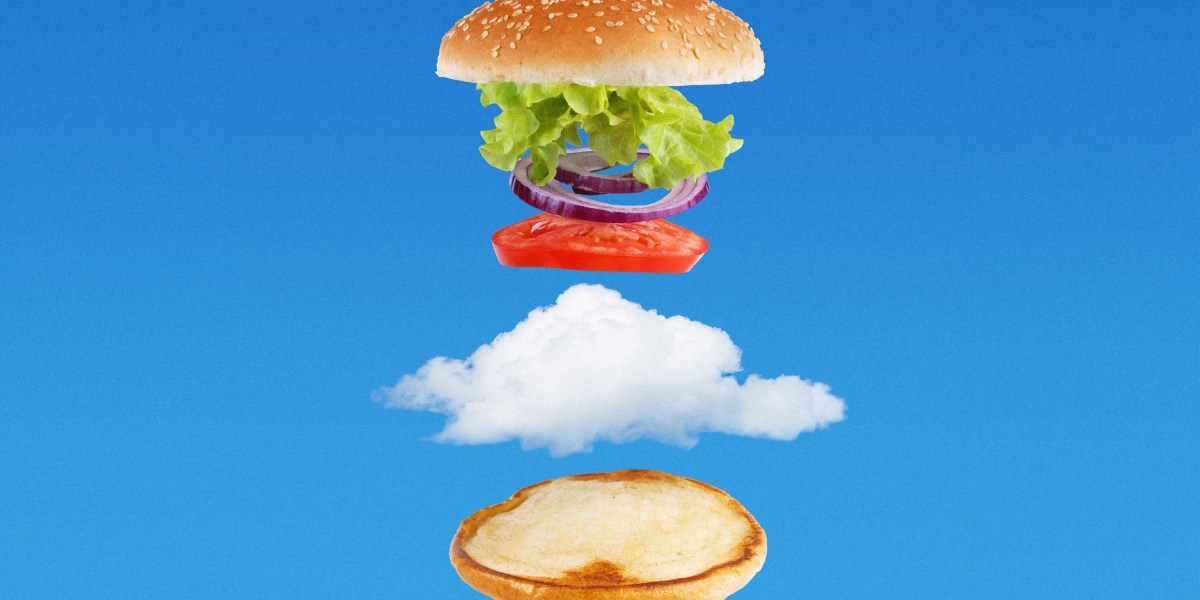Lisa Dyson is the founder of one of these startups, Air Protein. When she talks about the inspiration for her company, she often cites NASA research from the 1960s. Back then the agency, hoping to keep astronauts satiated on long-haul space journeys, explored the idea of growing bacterial cuisine on board before concluding, ultimately, that astronauts might not find it psychologically palatable. “Earth is actually like a spaceship,” Dyson explained in a 2016 TED Talk. “We have limited space and limited resources, and on Earth, we really do need to figure out how to recycle our carbon better.” Could these bacteria be the answer?
For now, the answer is a definite maybe. Some 25 companies worldwide have already taken up the challenge, hoping to turn abundant carbon dioxide into nutritious “air protein.” The ultimate goal of the people who work at these companies is to engineer a food source far lower in emissions than conventional farming—perhaps even one that could disrupt agriculture altogether. To do that, they’ll need to overcome some very real challenges. They’ll need to scale up production of their protein to compete commercially, and do it in a way that doesn’t create more emissions or other environmental issues. Even trickier: They’ll need to surmount the ick people may experience when contemplating a bacteria-based meal.
Some of these companies are focused on industrial animal feed, fish meal, and pet food—products with slimmer profit margins but less exacting consumers and fewer regulatory hurdles. Human food, however, is where the real money—and impact—is. That’s why several companies, like Dyson’s Air Protein, are focused on it. In 2023 Air Protein opened its first “air farm” in San Leandro, California, a hub for the commercial food production industry, and announced a strategic development agreement with one of the largest agricultural commodity traders in the world, ADM, to collaborate on research and development and build an even larger, commercial-scale plant. The company’s “Air Chicken” (which, to be clear, is not actual chicken) is slowly making its way toward grocery store shelves and dinner tables. But that’s only the beginning. Other companies are making progress at harnessing bacteria to spin air into protein, too—and someday soon, these microbial protein patties could be as common as veggie burgers.
An alternative to alternative proteins
The environmental case for microbial protein is clear enough; it’s a simple calculus of arable land, energy, and mouths to feed. The global demand for protein is already at an all-time high, and with the population expected to grow to 9.7 billion by 2050, traditional agriculture will have a hard time keeping up, especially as it battles climate change, soil degradation, and disease. A growing global middle class is expected to raise levels of meat consumption, but factory-farmed meat is one of the leading drivers of greenhouse-gas emissions. Although protein-rich alternatives like soy are far more sustainable, most of the soy grown in the world is destined for use as animal feed—not for human consumption.
In contrast, bacterial “crops” convert carbon dioxide directly into protein, in a process that uses much less land and water. Microbial protein “farms” could operate year-round anywhere renewable electricity is cheap—even in places like Chile’s Atacama Desert, where farming is nearly impossible. That would take the strain off agricultural land—and potentially even give us the chance to return it to the wild.
“We are liberating food production from the constraints of agriculture,” Juha-Pekka Pitkänen, cofounder and CTO of the Finnish startup Solar Foods, explained in a recent company video. In April 2024 Solar Foods opened a demonstration factory in Vantaa, a short train ride from the Helsinki airport. It’s here, at Factory 01, that the company hopes to produce enough of its goldenrod-yellow protein powder, Solein, to prove itself viable—some 160 metric tons a year.
Like Air Protein, Solar Foods begins its production process with naturally occurring hydrogen-oxidizing bacteria that metabolize carbon dioxide, the way plants do. In sterile bioreactors similar to the fermentation vats used in the brewing industry, the bacteria flourish in water on a steady diet of CO2, hydrogen, and a few additional nutrients, like nitrogen, calcium, phosphorus, and potassium. As they multiply, the bacteria thicken the water into a slurry, which is continuously siphoned off and dehydrated, creating a protein-rich powder that can be used as an ingredient in alternative meats, dairy products, and snacks.
“We are liberating food production from the constraints of agriculture.”
Juha-Pekka Pitkänen, Solar Foods
As Pitkänen explains, his research team at Finland’s state-owned VTT Technical Research Centre knew these microorganisms existed in the wild. To find a viable candidate, they narrowed down the natural conditions where one might be found, and then—as is the Finnish way—put on some hiking boots and got out there. “In Finland, you don’t have to go very far to find nature,” he says, shrugging. “You can find something useful in a ditch.”



